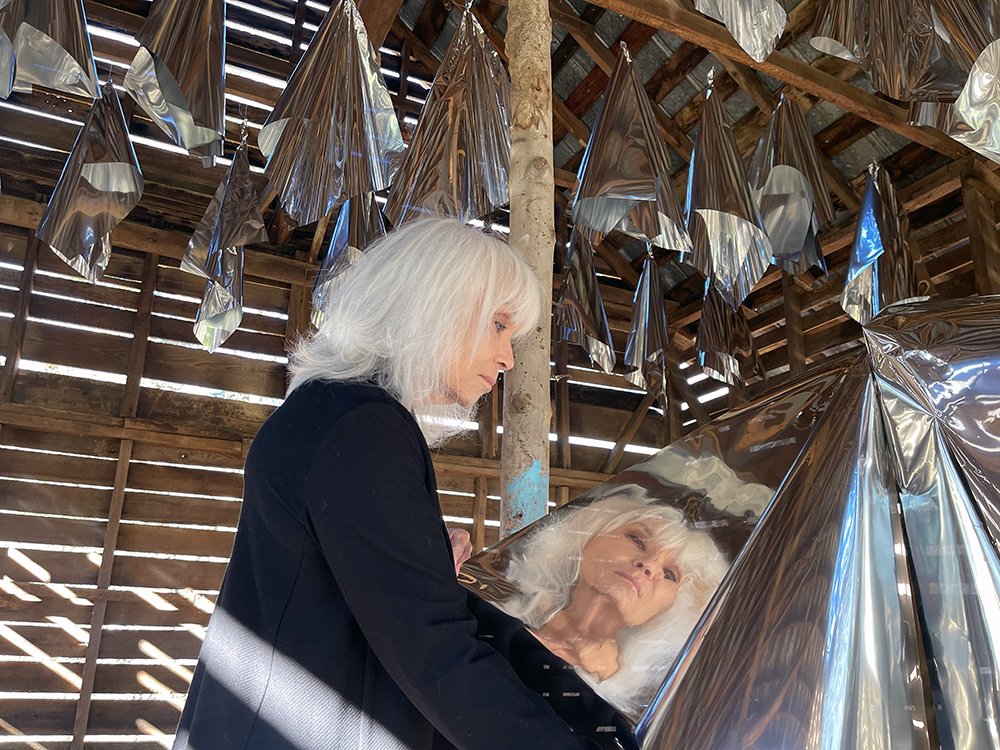
SMOKE AND MIRRORS
False illusions, sleight of hand, duplicity and tricks . . . Smoke and Mirrors characterizes colonial methodology toward Indigenous lands, people and resources. Tobacco was a sacred plant in pre-contact America, used in ceremony, with respect and thanksgiving. It is still a sacred plant that Indigenous people honor.
Smoke and Mirrors, installation/activation, 2021, Township 10 Residency
Mirrors (referencing the Pachuca obsidian mirror prized by John Dee, advisor to Queen Elizabeth I, and the Aztec god named “Smoking Mirror”) become visible as the smoke surrounding them slowly clears.
The Aztec believed mirrors held power and insight into the spirit world.
Mylar tobacco leaves curl from the rafters of the old drying barn. They mirror the viewer and offer insight into the eye of the beholder.
Is it a sacred plant or a commodity?
Research of pre-contact culture reveals again and again examples of plunder and appropriation by European colonizers; the English and French in North America, the Spanish in Central and South America.
Cochineal pigment was developed for art and ritual in Mexico and the Andes. Spanish invaders hoarded it and became wealthy maintaining a monopoly on this resource for over a hundred years. French and English speculators made fortunes turning a sacred plant into a poisonous addiction.



